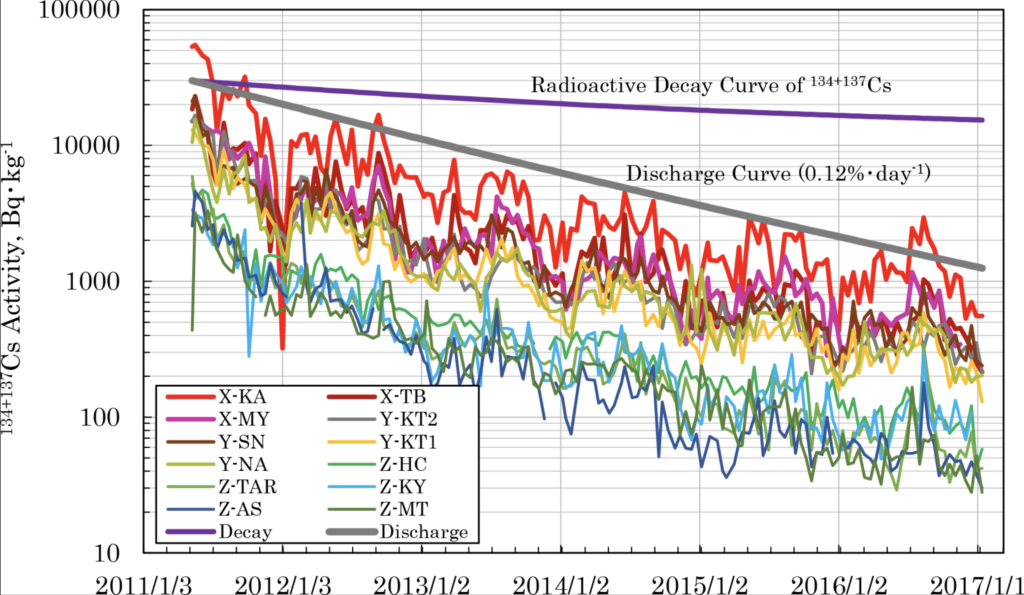 Radioactive contamination in the Tokyo metropolitan area in the immediate aftermath of the Fukushima Daiichi Nuclear Power Plant (FDNPP) accident was analyzed via surface soil sampled during a two-month period after the accident.
Radioactive contamination in the Tokyo metropolitan area in the immediate aftermath of the Fukushima Daiichi Nuclear Power Plant (FDNPP) accident was analyzed via surface soil sampled during a two-month period after the accident.
131I, 134Cs, and 137Cs were detected in these soil samples. The activity and inventory of radioactive material in the eastern part of Tokyo tended to be high. The 134Cs/137Cs activity ratio in soil was 0.978 ± 0.053. The 131I/137Cs ratio fluctuated widely, and was 19.7 ± 9.0 (weighted average 18.71 ± 0.13, n = 14) in the Tokyo metropolitan area.
The radioactive plume with high 131I activity spread into the Tokyo metropolitan area and was higher than the weighted average of 6.07 ± 0.04 (n = 26) in other areas.
The radiocesium activity and inventory surveyed in soil from a garden in Chiyoda Ward in the center of Tokyo, fell approximately 85% in the four months after the accident, and subsequently tended to rise slightly while fluctuating widely. It is possible that migration and redistribution of radiocesium occurred.
The behavior of radiocesium in Tokyo was analyzed via monitoring of radiocesium in sludge incineration ash. The radiocesium activity in the incineration ash was high at wastewater treatment centers that had catchment areas in eastern Tokyo and low at those with catchment areas in western Tokyo. Similar to the case of the garden soil, even in incineration ash, the radiocesium activity dropped rapidly immediately after the accident.
The radiocesium activity in the incineration ash fell steadily from the tenth month after the accident until December 2016, and its half-life was about 500 days. According to frequency analysis, in central Tokyo, the cycles of fluctuation of radiocesium activity in incineration ash and rainfall conformed, clearly showing that radiocesium deposited in urban areas was resuspended and transported by rainfall run-off.
The results reveal that the Tokyo metropolitan area even now continues to be affected by radioactive contamination caused by the FDNPP accident. We hope this study will contribute to the improved understanding of the radioactive contamination issue in Japan.
Temporal changes of the 134+137Cs radioactivity in the incineration ash from Tokyo’s wastewater treatment centers.
Analytical results of the activity of radionuclides in the soil samples collected in the Tokyo metropolitan area and the Kanto district area.


 Possible correlation shown between TMI nuclear accident and thyroid cancers
Possible correlation shown between TMI nuclear accident and thyroid cancers The Plutonium Files: America’s Secret Medical Experiments in the Cold War
The Plutonium Files: America’s Secret Medical Experiments in the Cold War Scientists trace the path of radioactive cesium in the ecosystem of Fukushima
Scientists trace the path of radioactive cesium in the ecosystem of Fukushima Deadly Deceit: Low-level Radiation, High-level Cover-up
Deadly Deceit: Low-level Radiation, High-level Cover-up